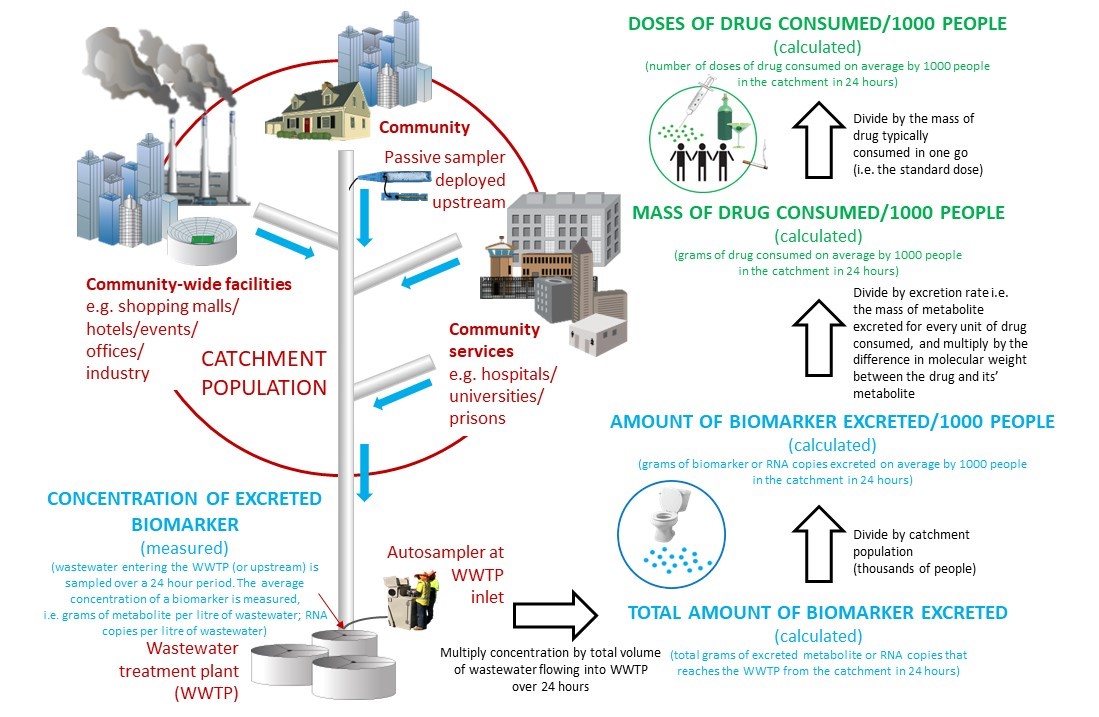Wastewater based epidemiology
Wastewater-based epidemiology (WBE) is a monitoring approach increasingly being used to assess trends in population chemical consumption, use and exposure as well as a surveillance tool from SARS-CoV-2 during the current Covid-19 pandemic. Here are a series of short video presentations and videos presenting the different components of WBE for both chemical and biological agents.

Videos
Please note, these videos were developed in 2021.
| Title | Presenter | Description | Link & Password |
| History of WBE internationally and in Australia - general introductions to WBE | Prof Kevin Thomas (QAEHS) | An introduction to WBE and its historical development in Australia and internationally. | Available here |
| How to Samples series | Josh Tynan (QAEHS) | A series of short videos showing how to sample. | Available here |
| Sampling uncertainties | Michael Lawrence (Bligh Tanner) | An overview of sampling uncertainties and their importance in WBE. | Available here |
| In sewer stability | Dr Jiaying Li (QAEHS) | In-sewer stability of WBE biomarkers. | Available here |
| Excretion factors | Dr Phong Thai (QAEHS) | The role of excretion factors for chemical biomarkers in calculating consumption. | Available here |
| Archiving stability | Dr Jake O'Brien (QAEHS) | The stability of chemical biomarkers under various storage conditions. | Available here |
| Festivals, mining and small populations | A/Prof Cobus Gerber (UniSA) | Application of WBE in small populations. | Available here |
| National Wastewater Drug Monitoring Program | Prof Jochen Mueller (QAEHS) | An overview of the Australian Criminal Intelligence Commission National Wastewater Drug Monitoring Program. | Available here |
| Sewersipper | Rory Verhagen (QAEHS) | An introduction to the Sewersipper sampler. | Available here |
| COVID Method | A/Prof Jianhua Guo (QAEHS) | Methods to detect SARS-CoV-2 in wastewater. | Available here |
| New psychoactive substances | Dr Richard Bade (QAEHS) | Detecting the use of new psychoactive substances in Australia. | Available here |
| SewAus wastewater program | Dr Jake O'Brien (QAEHS) | An introduction to the SewAus wastewater program. | Available here |
Surveillance of SARS-CoV-2 RNA in wastewater | Dr Warish Ahmed (CSIRO) | Analysis of SARS-CoV-2 RNA fragments in Qld wastewaters. | Link to video (YouTube) |
| Passive sampling | A/Prof David McCarthy | Understand how passive samplers help with near source tracking of COVID-19. | Available here |
| End user perspective - ACIC | Katie Willis, Shane Nielson, Amber Migus (ACIC) | A Federal Government agency’s perspective on the utility of wastewater-based epidemiology for government. | Available here |
| End user perspective - COVID | Dr Greg Jackson (Qld Health) | A State Government agency’s perspective on the utility of wastewater-based epidemiology for government | Available here |
